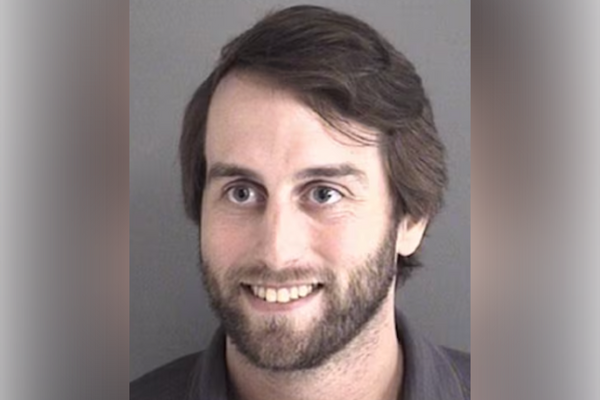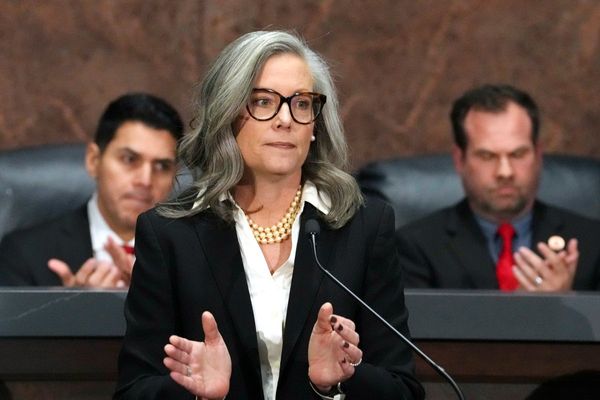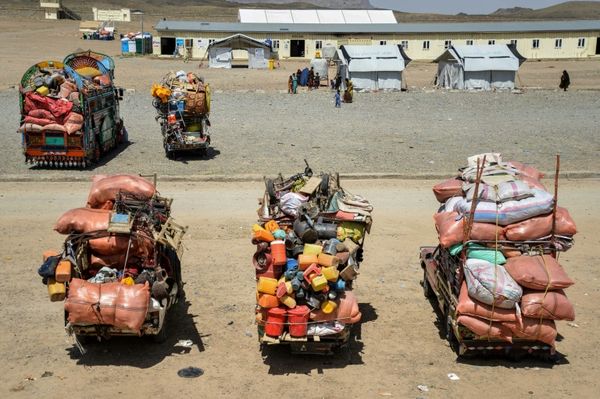We're just wrapping up the first month of 2025, which means a lot of places have been releasing their year-end reports from 2024. Among these is the Utah Department of Transportation, which just released its 2024 year-end traffic fatality numbers in January 2025.
Among the key bullet points in the press release about the 2024 data is that, "Motorcycle fatalities reached a 15-year high of 53." It then goes on to state that "This marks an increase compared to previous years, with a concentration of deaths during the summer months (June through August). Most incidents were single-vehicle crashes involving single riders, often attributed to speed, lack of protective gear, or loss of control."
This data prompted state legislators on the Utah House Transportation Committee to draft legislation that takes aim at curtailing behaviors that it credits with contributing to those increased numbers. On the face of it, that seems like an admirable goal. Surely, the most deaths in 15 years is a bad thing, right?
To be clear, every preventable death is a tragedy, and I'm not here to dispute that. But let's look at the actual numbers, as well as the proposed legislation, shall we?
A quick look at UDOT's Zero Fatalities website shows us all the numbers it's made public. And while it's not an incorrect statement that the 53 motorcycle fatalities recorded in 2024 is the highest number in years, it's also not significantly out of line with actual, real numbers of people who died in previous years.

It's not quite as dramatic, but another truthful statement could be that the 50 riders who died in 2022 represented the highest number of deaths in the past five years.
Again, every death is a tragedy, and it sucks that riders have died (and continue to die). It's understandable that people in Utah (and legislators are also people in Utah) might want to take action to send these numbers back down. The continual rise in "serious injuries" (that's the numbers in the dark gray bars on this chart) is also certainly something to be concerned about, and to want to address.
But so far in 2025, Utah legislators have proposed two bills that they say are aimed at increasing road safety, and that specifically relate to the behavior of motorcyclists. As always, RideApart is interested in the text of the bills themselves, so let's take a look.
First up, we have Utah H.B. 234, which seeks to increase fines against motorcycle riders who operate motorcycles in Utah without having a motorcycle endorsement. This bill would, if adopted in its current form, result in a minimum fine of $350 for riders who violate it.
However, it adds a provision that if a rider is to be found in violation of this law, but subsequently provided proof to the court within 30 days of either the entry of a plea or sentencing (whichever is later) that they got their motorcycle license, the fine could be waived. Furthermore, the bill as written offers additional latitude at the court's discretion, in that additional time could be allowed for the rider to obtain a motorcycle endorsement with "good cause shown."
This bill, as currently proposed, would take effect on May 7, 2025. It's currently being advanced out of committee to the full Utah state House, so we'll see how quickly it advances.
The second bill, Utah. H.B. 190, gets a little stickier. And it's here that I had to double-check that Utah hadn't previously legalized lane splitting, because I was pretty sure they hadn't.
Don't worry; they haven't. Lane splitting is not now, nor has it ever been legal in Utah. Instead, a very specific and narrow definition of lane filtering is currently legally allowed in the Beehive State.
According to the Utah Department of Public Safety, lane filtering is only allowed under very specific conditions. You must be on a roadway or off-ramp with two or more adjacent traffic lanes that are going in the same direction of travel. The speed limit there must be 45 miles per hour or less, and you and your motorcycle must be going no faster than 15 miles per hour.
And here's the kicker: Any vehicle you pass must be completely stopped. Not just moving slowly; stopped entirely. At a standstill. Unmoving.
If you've ever ridden in Southeast Asia, you've seen riders slowly make their way through stopped bumper-to-bumper four-wheeled traffic to get up to the front of the line at stop lights. This is the type of lane filtering that Utah says is legal. It's worth pointing that out, because some other jurisdictions define "lane filtering" differently, which is in part why it's such a source of confusion for riders and non-riders alike.
So, What Does Utah H.B. 190 Propose, Exactly?
If we go back to the text of H.B. 190, there are three specific prohibited actions on motorcycles that the text of this bill spells out.
Proper License Plate Display
One is about proper license plate display on motorcycles, with stipulations that they must be horizontally placed (not vertically placed, or otherwise placed under your tail or in a wheel well so they're hard to read), and must not have covers on them that are either colored or translucent. There's an exception in here that allows for the use of luggage that might partly obscure the plate at times, as well as motorcycle trailers, so it's clear some thought went into this provision.
Penalties, Possible Impounding of Motorcycles Used For Wheelies
Another is a prohibition and penalty scheme for wheelies, and it's effectively a three-strikes-and-you're-out rule. Assuming you have a motorcycle license in the first place and you violate this rule, a first-time violator could face license suspension of 90 days. Second-time offenders could face suspension of 180 days. Violate it a third time, and your license will be revoked if this bill is passed as currently written.
But, and this is important: All of the above potential penalties might well be moot, because first-time violators could simply have their motorcycles impounded instead. (Hey, the good news is, you can't have a second or third offense if you don't have a bike, right?)
I'm not done yet though, because the final topic tackled in this bill is lane splitting. Which, as noted above, is not now and has never been legal in Utah up to this point. So, what gives?
Penalties, Possible Impounding of Motorcycles Used to Lane Split
This bill, as written, spells out a penalties scheme for violators who engage in lane splitting in the great state of Utah. Much like violating the anti-wheelie statute, first-time violators who engage in what the state defines as "lane splitting," may have their license suspended for 90 days.
If a violator doesn't have a motorcycle license, then their regular driver's license will be suspended for 90 days instead. A second violation of the anti-lane-splitting provision would result in license suspension for 180 days, and a third violation would result in getting your license revoked entirely.
But again, just like the anti-wheelie provision, the whole three-strikes-and-you're-out rule might be entirely moot, because the law as written could see anyone who lane splits having their motorcycle impounded on the first offense. It's up to the discretion of the law enforcement officer who pulls you over, essentially.
Listen, no rider wants to see or hear that other riders are dying in preventable ways, while doing the thing that they love. And there will always be some folks who act like goons and ruin things for the rest of us, who just do whatever they want, whenever they want.
However, I think at least part of the problem here is in clear communication (not the eye-glazingly dry language that most legislation is written in) regarding what Utah considers to be legal lane filtering.
Why? Because other jurisdictions define "lane filtering" differently. And some consider "lane filtering" to take place if you pass between vehicles going at slow speeds (like under 10 miles per hour). For other road users, that's definitely slow, but that's still significantly faster than being at a complete standstill.
Remember the numerous attempts at getting the state of Oregon to legalize lane filtering, which so far haven't been signed into law? Those have historically involved a definition of "lane filtering" that would allow riders to pass between vehicles traveling at speeds of under 10 miles per hour.
Is unclear communication the only problem? Of course not. But there's a greater than zero percent chance that additional clarity about what's expected of riders can help. Is threatening to impound bikes if someone messes up even once the way to go? That seems like a pretty drastic step, particularly if a good part of the problem may be a lack of clear communication.
If you live in Utah, and you feel some type of way about either of these bills, it's best to let your state representatives know how you feel so they can take your input into consideration.







